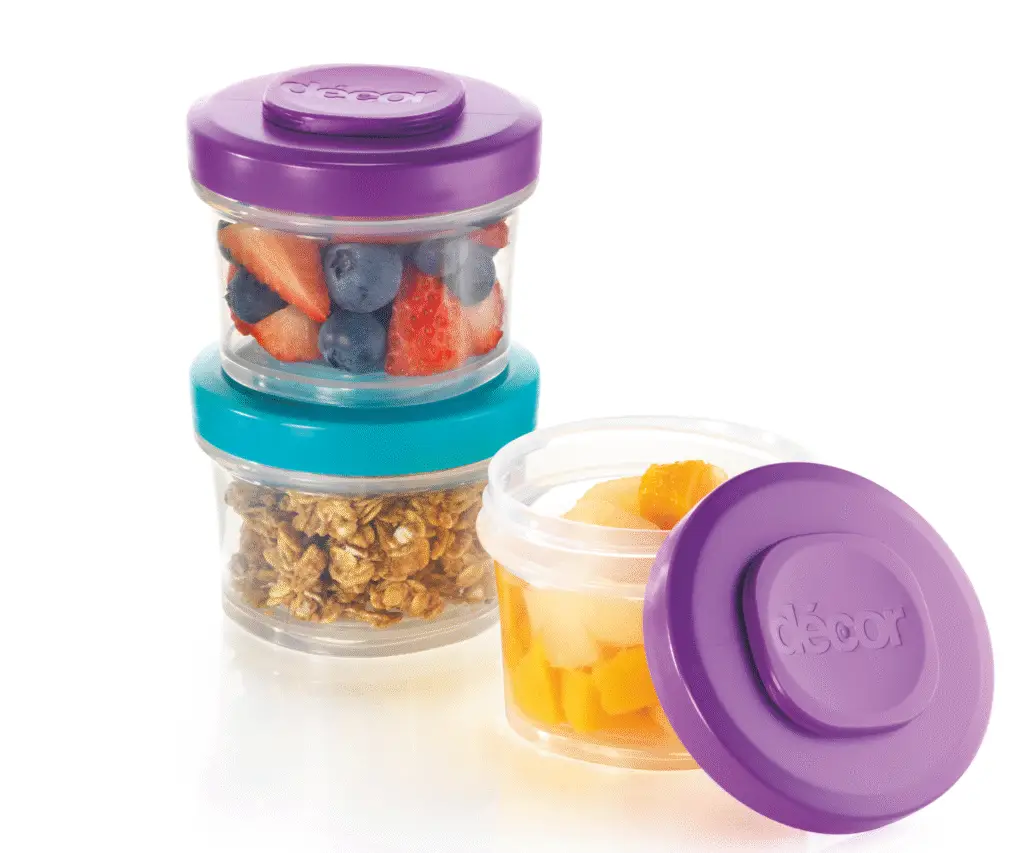Selling on Amazon has transformed how sellers reach customers all over the world. Millions of people flock to Amazon daily to shop for everything from biros to container houses. Amazon offers a level of exposure to products and a level of ease for shoppers that few (if any) other ecommerce channels can match.
One of the many ways that Amazon has revolutionised buying and selling is through the Fulfilment by Amazon (FBA) service. FBA handles storage, packing, shipping, and even customer service on behalf of sellers. This has enabled countless entrepreneurs to start and scale their businesses without the hassle and expense of fulfilment.
If it sounds too good to be true, that’s because a service this useful does come with drawbacks. So it’s important that, before committing to FBA, ecommerce businesses understand how the service works. Let’s take a look.
In this guide:
- What is Amazon FBA?
- Advantages of using Amazon FBA
- Inventory storage at scale
- Faster delivery and Prime eligibility
- Streamlines order fulfilment and shipping
- Dependable customer service and returns management
- Business scalability and operational flexibility
- Trust and credibility
- What are the drawbacks of Amazon FBA?
- Costs and fees
- Loss of control
- Inventory challenges and competition
- How can I tell if Amazon FBA is worth it for my business?
- Understand your product and market fit
- Estimate costs and profit margins
- Consider operational readiness
- Assess business goals and scale potential
- Test with a small batch
- How much does Amazon FBA cost?
- Fulfilment fees
- Storage fees
- Additional costs
- Tips for managing costs
- How can I get started with Amazon FBA?
- Final thoughts
- FAQs
- What is the difference between Amazon FBA and Amazon Seller?
- Does it cost to become an Amazon FBA seller?
- Can I sell internationally using FBA?
- Will Amazon FBA work for every product?
What is Amazon FBA?
FBA is a logistics and fulfilment service. It’s designed to simplify e-commerce operations for Amazon sellers and to make the order and delivery process faster and more convenient for buyers.
The process itself is quite straightforward. Sellers send their inventory to an Amazon fulfilment centre, and track it through the FBA restock inventory tool. Amazon then stores products until someone orders them. When a customer places an order, Amazon selects it, packs it, and ships it directly to the buyer.
Amazon also handles returns, refunds, and basic customer communication.
Essentially, FBA helps sellers to outsource the most time-consuming aspects of retail, and focus on product selection, quality control, marketing, R&D, and brand growth.
Advantages of using Amazon FBA
There are huge advantages to using FBA. It’s a comprehensive service that’s popular with multinational brands and small sellers alike for a reason. Here are just a few of the business benefits of using FBA:
Inventory storage at scale
Many growing sellers struggle with inventory storage. Warehousing costs can be high, and it’s hard to build up profitable stock volumes without dedicated storage.
FBA offers flexible storage across a large network of fulfilment centres. You can scale inventory without having to worry about space or warehouse staff. For smaller businesses the ability to access enterprise grade warehousing without capital investment is a big advantage.
Faster delivery and Prime eligibility
Speed is a decisive factor in online retail, largely thanks to Amazon itself. People expect to receive products within days (sometimes hours) of ordering.
Products fulfilled by Amazon are eligible for extremely fast and often free delivery under the Prime service. People love that convenience, and often prioritise Prime products when searching Amazon. As such, FBA and Prime can improve your product’s visibility on Amazon.
Faster delivery also reduces customer anxiety and cart abandonment. The cumulative effect is more traffic, more clicks, and a higher likelihood that a browse converts into a sale.
Streamlines order fulfilment and shipping
Order fulfilment involves receiving the order, locating the product, packing it correctly, booking a courier, tracking delivery, and managing any delivery issues. It’s very time-consuming, especially for smaller sellers who don’t have big teams to rely on.
FBA handles all of this using its own efficient processes and integrated courier system. However, it’s worth noting that from January 2026, Amazon will no longer provide packaging and label services for FBA shipments in the US, meaning if successful, this will likely come to the UK, EU, and wider marketplaces. Sellers will need to take responsibility for ensuring products are packaged and labelled correctly, or shipments could be refused at the warehouse.
Even with this change, sellers still benefit from a more predictable workflow and have a lot more time to focus on things like quality control, product development, marketing, and scaling the business.
Dependable customer service and returns management
Customer service is essential for building trust and loyalty, but it’s not always easy to respond to customers quickly, especially when you’re selling across multiple time zones. With FBA, Amazon handles the frontline of customer service.
Part of this involves returns management. FBA’s returns workflow is embedded within the marketplace, which makes it simple for customers to initiate and track returns.
Business scalability and operational flexibility
FBA lets businesses scale without the fixed costs that traditional logistics would require. For example, you can easily transition your Amazon seller account from moving tens of orders per week to hundreds or thousands simply by increasing the amount of inventory you send to Amazon, within your FBA capacity limits, which are reviewed and adjusted monthly according to your sales performance. Doing the same with a traditional logistics model would require building or extending a warehouse and bringing on extra staff.
The system is also very flexible. If a product takes off, the network absorbs the additional volume. If a line underperforms, you can simply drop inventory levels. To help maintain fast delivery times, Amazon may ‘commingle’ identical products from different sellers, fulfilling an order from whichever fulfilment centre is closest to the customer. It doesn’t affect your stock figures but forms part of how the network operates efficiently. This flexibility helps brands to test new products, expand into new regions, respond to demand, and scale much more easily.
Trust and credibility
Shoppers recognise the Prime badge, and they trust Amazon’s delivery network. Buyers are more likely to purchase a product they know will arrive quickly and can be returned easily. Customers also trust Amazon with payment processing, tracking, and issue resolution.
For new brands that have not yet established a reputation, the association with Amazon’s service standards can be a shortcut to credibility and customer confidence.
What are the drawbacks of Amazon FBA?
Fulfilment by Amazon offers huge benefits for sellers. It helps to save time and launch startups through its vast networks and resources. But that’s not the full story. As with everything, FBA has plenty of drawbacks and challenges that would-be sellers should consider before signing up.
Costs and fees
FBA is not free. FBA costs include storage space, which is typically cheaper from January to September and higher during the peak months of October to December, fulfilment per unit, and additional fees for long-term or oversized storage. These costs can quickly add up, and can seriously eat into your profit margins.
As such, sellers should calculate pricing very carefully, factoring in the cost of shipping to fulfilment centres as well as FBA charges and normal overheads.
Loss of control
Amazon’s systems are convenient, but they are also somewhat inflexible. Sellers have no control over packaging style, delivery methods, or some aspects of customer communication.
Modern buyers like a personalised experience from their sellers. They want to feel like valued customers, not data points, and Amazon’s service can feel impersonal. It adds a level of distance between buyer and seller that can make it hard to build brand-customer relationships and loyalty.
Inventory challenges and competition
Once stock enters Amazon’s fulfilment network, it can be difficult to get it back out again. Further, balancing FBA inventory can be tricky. If you overstock, you could pay higher storage fees than you should, but if you understock, you risk losing sales momentum.
Then there’s the competition. The simplicity of FBA has encouraged thousands of new sellers to enter the market. Depending on your niche, this could mean thousands of competitors for you. Strong brands with good marketing and quality products can rise above this, but the volume and intensity of the competition on Amazon can make things more difficult for small sellers.
How can I tell if Amazon FBA is worth it for my business?
Here’s how to determine whether or not FBA is right for your business:
Understand your product and market fit
Your product characteristics can make a big difference to your FBA success. Smaller items with low shipping weights tend to perform better than heavier, bulkier items because storage fees and fulfilment costs are lower.
Larger or fragile products need careful pricing. Storage and handling fees for these kinds of products can quickly eat into your margins, especially if you don’t sell them fast enough.
Remember, FBA sellers have no control over who handles their products, and little control over how they’re packaged for shipping. If your product needs bespoke packaging or personalisation that FBA cannot provide, it may not be suitable for you.
Estimate costs and profit margins
It’s important to understand what kinds of margins you’ll be dealing with. Start with the selling price, subtract the referral fee, then subtract the per-unit fulfilment fee, storage estimate, inbound shipping to the fulfilment centre, and an allowance for returns. Remember to include the Digital Services Fee and VAT, which is applied to all Amazon’s fees, along with any extra charges such as hazardous materials, labelling or aged inventory fees where applicable. The margin you have left needs to cover your overheads and profit. Ideally, you should also model things like fee changes and seasonal storage rates. If the results show thin margins, you can either tweak things like pricing or pick an alternative fulfilment model.
Consider operational readiness
FBA reduces seller workload, but it doesn’t totally eliminate it. You still need to ship products to Amazon’s fulfilment centres. You also need reliable suppliers, consistent product quality, compliant labelling and packaging, and a plan for replenishment based on sustainable lead times.
You will also need to maintain your listings, and handle exceptions like stranded inventory. Plus customer service as, while Amazon handles standard customer services, it will pass more complex queries and complaints on to you, the seller.
Assess business goals and scale potential
Work out if, and how, FBA fits within your broader strategy. If your goal is rapid entry into new markets with minimal infrastructure, FBA is a good strategic choice. However, if your long term aim is to craft a bespoke brand experience, you might be better off with a solution that gives you greater control.
Test with a small batch
Before committing, run a controlled test. Choose a limited amount of stock with solid demand indicators, send some to FBA, and track performance metrics like conversion rate, return rate, and contribution margin. You can also take a blended approach, listing some products through both FBA and FBM to compare results. This will show you whether the model is viable, and what you can refine for best success.
How much does Amazon FBA cost?
Amazon regularly updates FBA fees, often twice a year, so it’s important to always check the official FBA Fee Calculator for the current rates in your region before committing to the service.
But let’s break down the general costs associated with FBA:
Fulfilment fees
Fulfilment fees are charged per unit. They cover picking, packing, and shipping products to the customer. Smaller items have lower fees, while larger or heavier items cost more. For multipack items or bundles, you can bring costs down by making sure that the packaging qualifies as a single unit.
Storage fees
Monthly storage fees are charged based on the cubic volume of your inventory in fulfilment centres. Good storage cost discipline can be what separates profitable FBA operations from those that struggle. Accurate forecasting, realistic sales targets, and timely replenishment can help keep storage costs within budget.
Additional costs
Beyond fulfilment and storage, you may also face costs for FBA shipments, product preparation, labelling, removal orders, and returns processing.
Tips for managing costs
You can control costs in FBA through careful choices and planning. Choose products that ship as standard size, optimise packaging to minimise weight and unit numbers, and design cartons that fit Amazon’s requirements.
When it comes to restocking, send out quantities that balance stock availability with storage exposure. Pay close attention to inventory data, and consider price adjustments or promotions before long term fees accrue.
How can I get started with Amazon FBA?
If this all sounds good to you, let’s take a look at setting up your FBA account.
- Set up your seller account. Create an Amazon selling account and select your preferred professional plan.
- Prepare your products. Make sure that your products are retail-ready, with barcodes, compliant labelling, and suitable packaging.
- Create a shipping plan. In Seller Central, make a shipping plan for sending units out to FBA. The system will assign fulfilment centres and generate carton labels.
- Send inventory to Amazon. You can track the shipment and get confirmation of receipt in Seller Central. Once the inventory is checked into the centre, your listings will go live. Keep a close eye on the inventory page for issues like stranded stock or labelling errors.
- Launch and optimise your listings. Boost your listings with high-quality images, clear product titles, and keyword-rich descriptions.
Final thoughts
For entrepreneurs looking for an entry point into ecommerce without the resources to handle fulfilment logistics, FBA can be a powerful option. It gives instant access to an enormous audience, a reliable fulfilment system, and all the trust and other benefits that come with Prime.
That being said, FBA doesn’t offer guaranteed success. Competition is fierce on Amazon, costs can shoot up quickly, and sellers have a lot less freedom and control with FBA than they might with another fulfilment system.
For sellers who understand their margins, manage inventory intelligently, and remain adaptable to Amazon’s changing environment, FBA can be both profitable and sustainable. For those expecting instant success without preparation, it can quickly become an expensive failure. The key is to approach FBA as one element of a wider strategy rather than the foundation of your operation.
FAQs
What is the difference between Amazon FBA and Amazon Seller?
Amazon Seller allows businesses to sell on Amazon. You don’t have to join FBA to be an Amazon Seller. FBA is a service that lets Amazon store and ship your products for you.
Does it cost to become an Amazon FBA seller?
There are fees to use FBA. You pay a monthly subscription for a professional seller account, referral fees, category fees and digital service fees on each sale, and FBA fees for storage, fulfilment, and returns.
Can I sell internationally using FBA?
Yes, FBA supports cross-border selling in many regions. You can list products in multiple Amazon marketplaces and use Amazon’s fulfilment network to store and ship within those countries. However, selling internationally may involve additional tax, compliance, and customs considerations.
Will Amazon FBA work for every product?
No, FBA suits some products better than others. Items that are small, light, and consistently in demand usually perform well. Very heavy, oversized, or low-margin products may struggle due to fees and storage costs.




